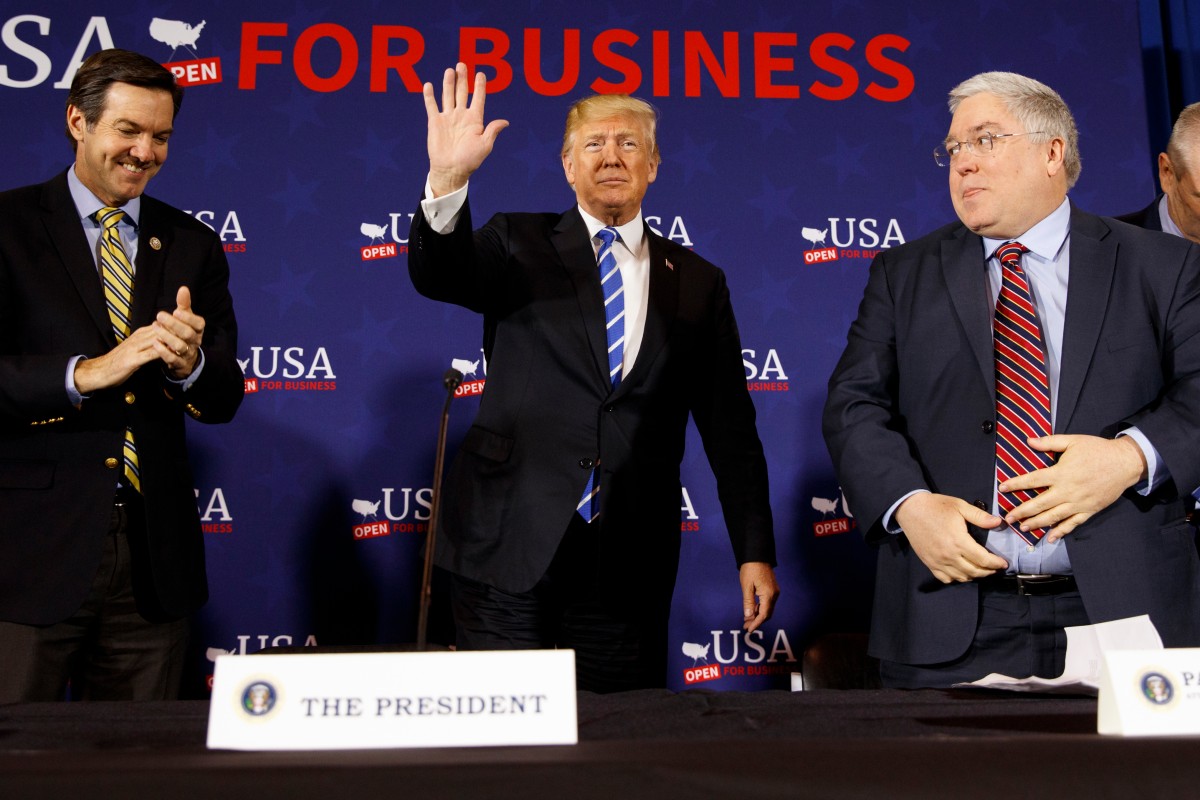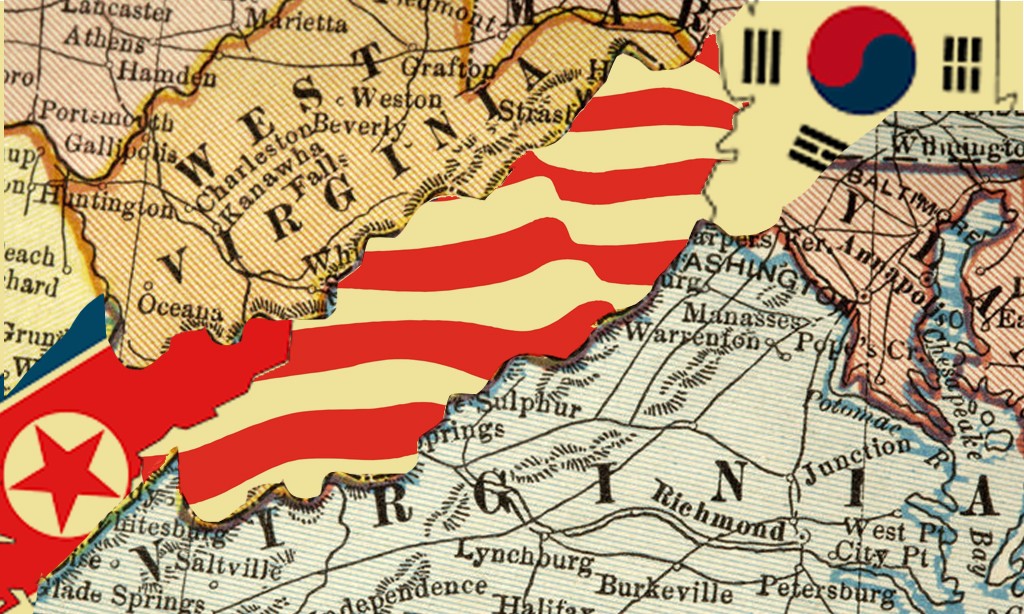Jesse Wright, news director at West Virginia Public Broadcasting, sat down with Mike Costello, food editor at 100 Days in Appalachia, Monday morning for WVPB’s West Virginia Morning program.
The two discussed Costello’s recent appearance on CNN’s Anthony Bourdain’s Parts Unknown Sunday, as well as Costello’s upcoming new online food and culture publication with 100 Days called “The Seed Swap.”
Listen to that discussion or read excerpts from Jesse Wright’s discussion with Mike Costello below.
ANTHONY BOURDAIN’S “PARTS UNKNOWN” AIRED LAST NIGHT (SUNDAY) ON CNN. YOU WERE A PART OF THAT SHOW. YOU WANT TO TALK A LITTLE BIT ABOUT WHAT THAT EXPERIENCE WAS LIKE?
You know, you go through this wide range of feelings and emotions when something like that happens … I’m not going to lie — it’s totally an honor. To just sort of feel like somebody is paying attention to the work you’re doing and you get sought out for something like this. And that’s really a good feeling.
I think it is a testament, not necessarily to my work and to Lost Creek Farm’s work, but to the work of the sort of broader food community that we work with that makes us who we are.
And we really tried to show that off in the show. We tried to make sure that our food community was really well-represented, from the seed saver who have been saving seed for six generations or more, and have given us that seed so that we can keep growing that in our garden, to traditional sausage makers, or traditional bakers, or food justice advocates, or young farmers just like us who kind of end up making a lot of sacrifices to do what they do.
You know, this is the community that we always sort of weave into our stories, and that’s really the story that we wanted to tell on CNN.
But you know, there’s this other side of it, and I think the more accurate answer of how that experience was is that it’s really freaking stressful.
You know, it’s stressful for a few reasons. One of which was just that we’re in the middle of a giant deconstruction, reconstruction project. We’re fixing up an old 1800-era farmhouse that we kind of had to take down to the bones and then build back up.
… And then there were some funny things that happened, like our well ran dry in the middle of the day. It was in middle September — like the driest time of the year — and our well, we’re on an old well farm, and sometimes it’s like you can maybe take a shower or two, and then you go for a couple of hours without water for the rest of the day. So there in the middle of the day, at around 2 p.m., we’ve got a bunch of people cooking in our kitchen. We’ve got a bunch of guests, and we just run out of water
… But even outside the filming and after the film crew left, there’s this stress that comes with the pressure of trying to tell the story accurately — trying to tell your story accurately, trying to tell the state’s story, and trying to tell the region’s story.
WELL, SPEAKING OF YOUR WORK AND YOUR CONNECTION TO MEDIA, YOU’RE NOW CONTRIBUTING EDITOR AT 100 DAYS IN APPALACHIA, WHICH WEST VIRGINIA PUBLIC BROADCASTING IS A PART OF, ONE OF THE EDITORIAL COLLABORATORS. THERE’S SOME NEW WORK THAT’S COMING OUT WITH THE PROJECT. YOU WANT TO TALK A LITTLE BIT ABOUT WHAT’S ON DECK?
Sure. 100 Days in Appalachia, for those who aren’t familiar with that project, it was sort of a project that was born out of kind of a response to the media coverage surrounding the 2016 election. It was during a time in which Appalachia was portrayed, and further than it already had been, by sort of a sense of homogeneity in our ideology, in our cultural background.
And it was this situation where media was coming to West Virginia day after day to tell this story of these poor, desperate white voters in Trump Country. And it was just this singular narrative that we knew we had to combat somehow.
So 100 Days in Appalachia was conceptualized out of the necessity to provide a rebuttal there, and to provide a counternarrative that provided a more accurate snapshot of the region, and provided a little bit more — actually a lot more — nuance and complexity to the narratives that the national media was putting out each day.
I think that there are a lot of parallels to be drawn between the 2016 election coverage of Appalachia and the kind of constant media hype that we’re seeing around Appalachian food as the trend.
When the food media tends to talk about Appalachian food, we’re seeing a lot of Appalachia being pigeonholed and simplified, and all of that nuance and complexity that is so important to our political reporting is also missing from food reporting.
And when you think about food being a mark of culture, of people tied to place, you know you want the stories about food to really reflect all of that deep, complex relationship that we have with the land here. We want it to reflect the great level of diversity that Appalachia has here.
So through 100 Days in Appalachia, with all of this in mind, we’re going to launch an online food publication that’s associated with 100 Days sometime this summer, probably in June.
We already have quite an impressive team of some contributors assembled to really tell that story that we want to tell through food, and to look at this project through 100 Days in Appalachia as something different, as an episode of “Parts Unknown” where people think it’s this one-and-done opportunity to tell a story.
You know, this is a platform that we have, and that we’ve developed knowing that there are so many stories to tell, and so many people who need to be telling those stories. That we’re going to do more than what a single TV episode can provide.
SO MIKE, AS YOU REFLECT ON THE “PARTS UNKNOWN” EXPERIENCE, AS WELL AS CONSIDER THE LAUNCH OF THIS NEW FOOD PROJECT, WHAT DO YOU HOPE THAT YOUR AUDIENCE TAKES AWAY FROM THE WORK THAT YOU’RE DOING?
Well, that’s a good question, and I think that there are different answers to that, depending on whether I consider the sort of internal audience — what’s in West Virginia and what’s in Appalachia — and external audience.
Certainly through both the work that I do as a chef and as a farmer with Lost Creek Farm, and then also as a journalist and an editor with 100 Days in Appalachia, you know we want to tell a story about this place that is more fair and just and accurate than the stories that people are used to hearing. So I’m always thinking about how we can tell a story about diversity and complexity, and food is a great way to do that. So that’s something that I think about when I’m thinking more about an external audience.
And then for an internal audience, I think a lot about my own experience when I grew up and when I was a teenager. When I was about 16 or so, I decided that I wanted to be a chef. And I don’t think I really at the time wanted to be a chef that specialized in regional cuisine so much. I just was sort of drawn by the creativity of being in the kitchen and cooking.
But there were certain things that happened in that experience that connected some dots for me about just the way Appalachian culture and heritage was being valued, both inside and outside the region.
One of those in the restaurant world was just working in restaurants, where the perception of quality had to do with more about how exotic the ingredients were than how locally and how rooted in place they were. And that was a total turn-off to me. I mean, it was like anything that was kind of considered West Virginian or Appalachian was seen as inferior, so we sort of had to create this distance between ourselves and something that was considered Appalachian.
So I think there’s a lot of overlap in the way that I approach cooking and farming, and the way that I approach this journalism project through 100 Days in Appalachia. Because it’s like when you’re talking about food from the region, the story is by far the most important ingredient that there is.
This interview was originally produced by West Virginia Public Broadcasting.
Food editor Mike Costello (@costellowv) is a chef, farmer and storyteller at Lost Creek Farm in Harrison County, West Virginia. Through his cooking and writing, Mike strives to tell important stories about a misrepresented and misunderstood region he’s always called home.



